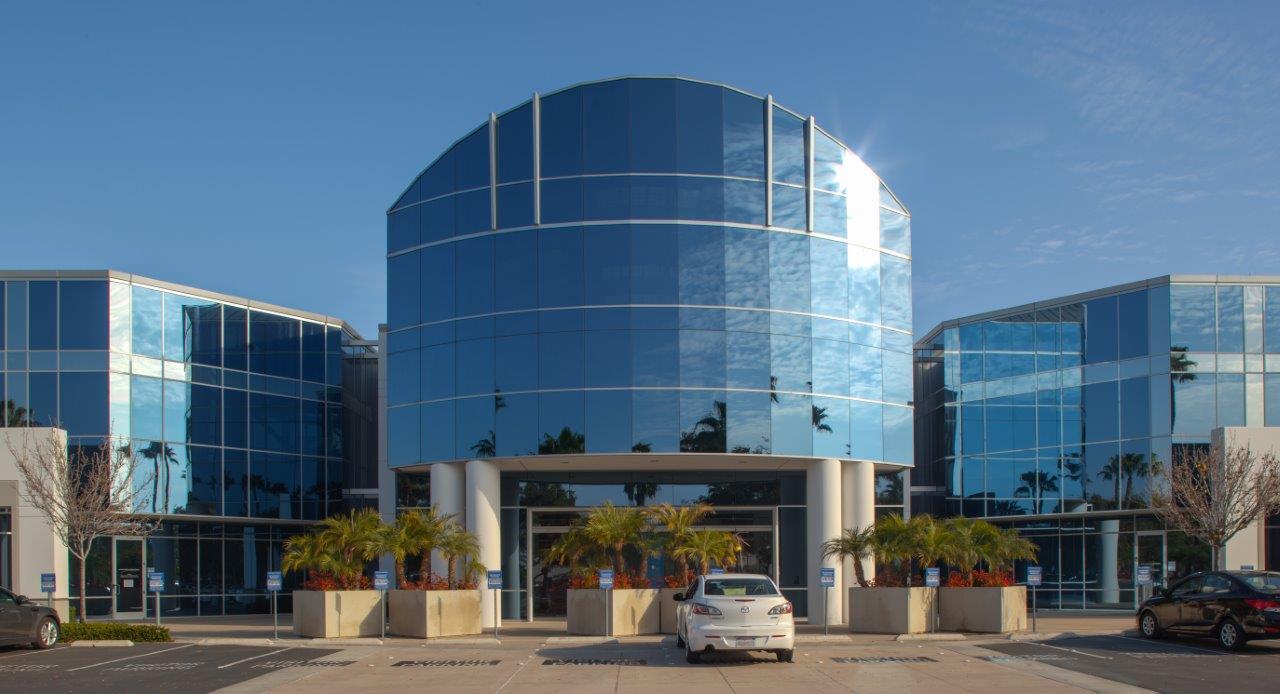Daily Business Report-April 17, 2015
San Diego County Home Sales Climb Sharply in March
Home Prices Also Rise
Homes sold in San Diego County in March increased sharply month over month from February and also rose on a year-over-year basis for the first time in three months, according to CoreLogic DataQuick.
The number of homes sold in the county in March totaled 3,467 — an increase of 13.4 percent from sales of 3,056 in March 2014 and an increase from the 2,541 sales in February.
The median sales price in the county in March was put at $456,000 — a jump of 6.8 percent from March 2014 and an increase from February’s sales price of $410,000.

Southern California Sales and Prices
According to CoreLogic data, a total of 19,603 new and existing houses and condos sold in Los Angeles, Riverside, San Diego, Ventura, San Bernardino and Orange counties in March 2015. That was up by 43.6 percent month over month from 13,650 sales in February 2015, and up by 11.1 percent year over year from 17,638 sales in March 2014.
On average, Southern California home sales have increased by 36.5 percent between the months of February and March since 1988, when CoreLogic data began. Southern California home sales have fallen year over year in nine out of the last 12 months. March home sales have ranged from a low of 12,808 in 2008 to a high of 37,030 in 2004. March 2015 sales were 18.2 percent below the March average of 23,954 sales since 1988.
The median price paid for all new and existing houses and condos sold in the six-county Southern California region in March 2015 was $425,000. That was up by 2.4 percent month over month from $415,000 in February 2015 and up by 6.3 percent year over year from $400,000 in March 2014. The median sale price has risen year over year each month since April 2012, and the March median price is the highest since the median price was also $425,000 in December 2007.
“A surge in home sales between February and March is normal, given a lot of buyers and sellers return to the market in late winter, resulting in more deals closing in March,” said Andrew LePage, CoreLogic analyst. “The bigger news is that sales increased year over year, which is something that’s only happened in a few months over the past year. Sales have been hampered by low inventory, especially in the lower price ranges, rising prices and lingering credit hurdles. Price gains over the past two years could trigger substantially more inventory in the months ahead, and that could support higher sales and tame home price appreciation.”

San Diego County Jobless Rate Falls to 5.1 Percent
Nonfarm employment up by 8,000 jobs over the month;
up by 40,900 jobs over the year
The unemployment rate in the San Diego County dropped to 5.1 percent in March, down from a revised 5.3 percent in February and below the year-ago estimate of 7.1 percent, the state Employment Development Department reported today.
California’s jobless rate for March was 6.5 percent and the nation’s jobless rate was 5.6 percent.
Between February and March 2015:
Total nonfarm employment increased from 1,367,400 to 1,375,400, a gain of 8,000 jobs. Agricultural employment added 200 jobs, or 2.0 percent.
• Government reported the greatest month-over gain, adding 2,000 jobs. Local government (up 1,600) contributed to roughly 80 percent of the job growth in this sector, mostly from seasonal advances in local government education (up 1,500). State government added 500, primarily from state government education (up 400). A decline of 100 jobs in federal government slightly offset the overall employment expansion in this sector.
• Eight other sectors also posted month-over job gains: educational and health services (up 1,800); leisure and hospitality (up 1,800); construction (up 1,500); professional and business services (up 1,000); manufacturing (up 600); other services (up 500); financial activities (up 100); and information (up 100).
• One sector recorded month-over job losses. Trade, transportation, and utilities declined by 1,400 jobs, primarily from wholesale trade (down 700). Retail trade receded by 600 jobs, while transportation, warehousing, and utilities contracted by 100 jobs.
Between March 2014 and March 2015:
Total nonfarm employment increased by 40,900 jobs, or 3.1 percent. Agricultural employment added 800 jobs, or 8.3 percent.
• Professional and business services reported the greatest year-over gain, adding 9,900 jobs. Professional, scientific, and technical services (up 9,100) accounted for more than 90 percent of the employment expansion in this sector. Administrative and support and waste services gained 1,500 jobs, followed by a decline of 700 jobs in management of companies and enterprises.
• Nine other nonfarm sectors also added jobs over the year. The most notable employment gains came from educational and health services (up 7,400); leisure and hospitality (up 7,300); and construction (up 4,600).
• All major sectors recorded year-over job growth except mining and logging, which reported no change in employment levels over the year.

18 San Diego Area Businesses to Receive
$20.2 Million in State Credits for Creating Jobs
Eighteen San Diego area businesses will receive $20.24 million in state credits for creating new jobs through the Governor’s Office of Business and Economic Development (GO-Biz), an office created by the Legislature.
The California Competes Tax Credit (CCTC) Committee on Thursday announced that these 18 businesses will create 4,311 new jobs. Among these businesses are:
Northrop Grumman Systems Corp., an aircraft manufacturing company with operations in San Diego and throughout Southern California, will create 1,359 jobs by investing $520.3 million and will receive a $10 million tax credit.
Samumed LLC of San Diego, a biopharmaceutical research and development firm that will create 273 jobs by investing $30.5 million, for which it will receive a $2.1 million tax credit.
GKN Aerospace Chem-tronics Inc. of El Cajon, which manufactures aircraft engines and engine parts. GKN will create 494 jobs and invest $125 million to receive a $1.2 million tax credit.
T2e Energy Holdings LLC of Vista, an organic chemical manufacturer. It will create 199 jobs by investing $364 million and receive a $1 million tax credit.
These businesses are among 93 throughout the state that have received tax credits to expand and create jobs in California. Altogether, $69 million in credits were awarded. In earlier rounds of the California Competes program, 12 San Diego area companies received more than $7 million in tax credits.
“Once again, the San Diego region is reaping the rewards of its innovative spirit,” said Assembly Speaker Toni Atkins (D-San Diego). “The tax credits will create good-paying middle class jobs for San Diegans throughout the county and is a part of California’s investment to the region’s businesses and people.”
Tax credit agreements are negotiated by GO-Biz and approved by a statutorily created “California Competes Tax Credit Committee,” consisting of the State Treasurer, the Director of the Department of Finance, the Director of GO-Biz, one appointee each by the Speaker of the Assembly and Senate Committee on Rules. The amount of credits available will increase each year until 2018. Twenty-five percent of the credits are reserved for small businesses.
2 Carlsbad Firms Toast $37.6 Million in Navy Contracts
Two Carlsbad firms are celebrating their latest Navy contracts, with a combined value of $37 million.
RQ-Berg Joint Venture was awarded $25.33 million for work under a previously awarded multiple award contract for design and construction of Camp Wilson infrastructure upgrade at the Marine Corps Air Ground Combat Center in Twentynine Palms, the Defense Department said.
Previously announced contracts to RQ-Berg have totaled $40.5 million since 2006, according to a site that tracks such awards.
Satellite Internet service provider ViaSat Inc. has been awarded a $12.3 million contract for the repair of the Multifunctional Information Distribution Systems used on various aircraft platforms. Since 2006, ViaSat has won at least $784 million in Pentagon contracts — from 37 projects.
— Times of San Diego

City Attorney Looks Into Expanding Zoo
Tax to Fix Balboa Park’s Infrastructure
The City Attorney’s Office has agreed to look further into whether a levy on property taxes in San Diego to pay for the San Diego Zoo’s animal exhibits maintenance can be used to fix Balboa Park’s infrastructure.
Deputy City Attorney Brant Will said his office stands behind a 2004 opinion that modifications to the tax would violate the state constitution, but he agreed to a request by City Council President Sherri Lightner to take a look at the definition of “zoological exhibit,” which could refer to other areas of the park.
Her request came during a hearing of the council’s Charter Review Committee, which is sorting through a long series of suggestions of ways to clarify, streamline and modernize provisions of the City Charter, the city’s primary governing document.
Sometime civic activist John Stump has proposed changes for more than a decade to the tax, which was instituted in 1934 when the zoo was in financial trouble. The levy, which is codified in the City Charter, collects a half-cent for every $100 of assessed property in San Diego.
According to the city’s independent budget analyst’s office, the levy is projected to bring in $11.7 million in the fiscal year that begins July 1, and the money can only be used to maintain zoological exhibits. San Diego Zoo Global, the nonprofit that runs the zoo and Safari Park, earns $269 million in annual income and has assets of $451 million, Jeff Kawar of the office said.
Kawar estimated that the whole of Balboa Park has about $300 million worth of unmet maintenance needs.
— City News Service
Port Commissioners Approve Purchase,
Installation of Solar-Powered Smart Meters
Port commissioners have approved the purchase and installation of 520 solar-powered smart meters and established a new per-hour range of rates from $1 to $2.50.
The board authorized the port’s CEO to adjust parking rates based on market demand at Port public parking lots and garages. The rate adjustments could not exceed the rates already approved by the board. This will allow rates to be adjusted at parking lots and garages with excess vacancy to increase demand.
The installation of the smart meters, expected in mid-2015, will improve the visitor experience by providing a modern, user-friendly interface to visitors, allowing multiple forms of payment such as commonly used debit and credit cards in addition to traditional coin payments, according to port officials. The changes are intended to increase parking availability to the public for short-term visits by allowing the rates to flex based on market demand.
Businesses in the area, such as shops and restaurants, are expected to benefit from improved parking turnover. Other changes approved by the board include adding Sunday enforcement of parking meters to ensure space turnover during busy weekend hours; and shifting the hours of enforcement from 8 a.m. to 6 p.m. to 10 a.m. to 8 p.m. to align with common business hours. The new ordinance will go into effect in 30 days.
The Smart Meters will be installed in the North Embarcadero, Tuna Harbor and Ruocco Park lots. Traditional meters will remain in place on Shelter Island and in Embarcadero Parks North and South for the time being. The changes are based on the success of an approved Parking Meter Pilot Program that went into effect in Tuna Harbor beginning in May 2014 and was subsequently expanded to include meters on the North Embarcadero and adjacent to Ruocco Park.
Demand for public parking along San Diego’s popular waterfront has grown in recent years. Due to recent developments including the opening of the County of San Diego Waterfront Park, The Headquarters retail and restaurant center, the new hotel construction and park at Lane Field, and the construction of public improvements along the North Embarcadero, parking availability has been reduced.
SDSU Researchers Develop Way
To Monitor Activity in Viruses
Researchers at San Diego State University reported Thursday that they have developed a way to monitor molecular activity within viruses, which could make it easier to screen drug candidates to fight deadly diseases.
Scientists led by SDSU biologist Roland Wolkowicz have been working for the past few years to develop cell-based platforms that can be used to monitor the biomolecular activity of viruses inside their host cells.
They made one for the dengue virus, but it could be adapted for HIV, West Nile and other viral diseases, according to their study results, which were published recently in the Journal of Biomolecular Screening and the Journal of Visualized Experiments.
The platform screens host cells to detect whether or not a protein function of dengue, known as pre-membrane protein cleavage, has occurred, according to the scientists.
The cleavage process is important for new viral particles to be able to infect a host cell. The researchers said preventing the cleavage from happening could effectively stop the virus in its tracks.
“Cleavage is absolutely critical to the virus’ life cycle,” Wolkowicz said. “While the role of prM cleavage is not completely understood, new particles won’t mature without it. By blocking prM cleavage, you clearly diminish the virus’ ability to infect other cells.”
— City News Service
UC San Diego Study: E-Cigarette
Users Less Likely to Quit Smoking
Users of electronic cigarettes are less likely to quit smoking than smokers who never use the device, the UC San Diego School of Medicine reported Thursday. In a study published in the American Journal of Public Health, UCSD researchers found that smokers who used e-cigarettes — also known as vapor inhalers — were 49 percent less likely to decrease cigarette use and 59 percent less likely to quit altogether, compared to smokers who never used e-cigarettes.

The population-based study followed 1,000 California smokers over one year, according to UCSD. The results come amid a debate over the effectiveness of the battery-operated devices.
“Based on the idea that smokers use e-cigarettes to quit smoking, we hypothesized that smokers who used these products would be more successful in quitting,” said Dr. Wael Al-Delaimy, a professor and chief of the Division of Global Public Health in the Department of Family Medicine and Public Health.
“But the research revealed the contrary,” Al-Delaimy said. “We need further studies to answer why they cannot quit. One hypothesis is that smokers are receiving an increase in nicotine dose by using e-cigarettes.”
The scientists said that although e-cigarettes do not contain tobacco, users exhale a mixture of volatile organic compounds, heavy metals and ultra-fine particles that usually contain aerosolized nicotine in a cloud of vapor.
The findings show that daily smokers and women were more likely to have tried e-cigarettes.
Al-Delaimy said the study could inform the U.S. Food and Drug Administration and other regulators on the profile of e-cigarette usage among smokers as they create guidelines for the devices.
The county and city of San Diego last year approved restrictions on the sale and use of e-cigarettes last year, placing them in roughly the same category as traditional cigarettes
— City News Service

Program Launched to Get At-Risk Girls
Excited About Entering STEM Field
Millennium Health, a San Diego company that offers health monitoring services, and Big Brothers Big Sisters of San Diego County have launched a new program to get at-risk girls excited about entering the fields of science, technology, engineering and math (STEM).
The program, Beyond School Walls STEM Sister-2-Sister, is the first of its kind in San Diego providing one-to-one mentoring, paired with a STEM-based curriculum, to underserved girls from Del Dios Academy of Arts and Science, while helping deter them from gang and drug-related activity.
“Having daughters of my own, I understand the importance of broadening the girls’ exposure to the sciences, helping them explore their talents, and building their sense of confidence and value,” said Brock Hardaway, CEO of Millennium Health. “Every child should have the opportunity to reach her full potential, and with the help of our dedicated team of employees who have become Big Sisters, we hope to make a significant, positive impact in these girls’ lives.”
During the year-long program, the students are bused to Millennium’s headquarters in Rancho Bernardo twice a month to meet with their Big Sister. The group participates in a 30-minute STEM activity, followed by an hour of one-to-one mentorship.
“Children in middle school are at a crossroads regarding choices about their education,” said Deborah Condon, president and CEO of Big Brothers Big Sisters of San Diego County. “Offering children a glimpse of a fascinating world where they may find a future, while giving them confidence that they are capable of reaching their goals, can change the trajectory of their aspirations and engagement. Caring corporate partners, such as Millennium Health, are conduits for helping children thrive.”



